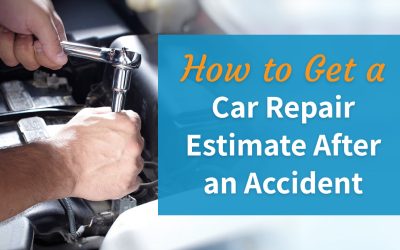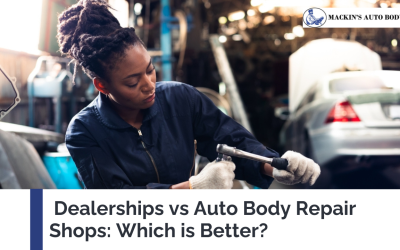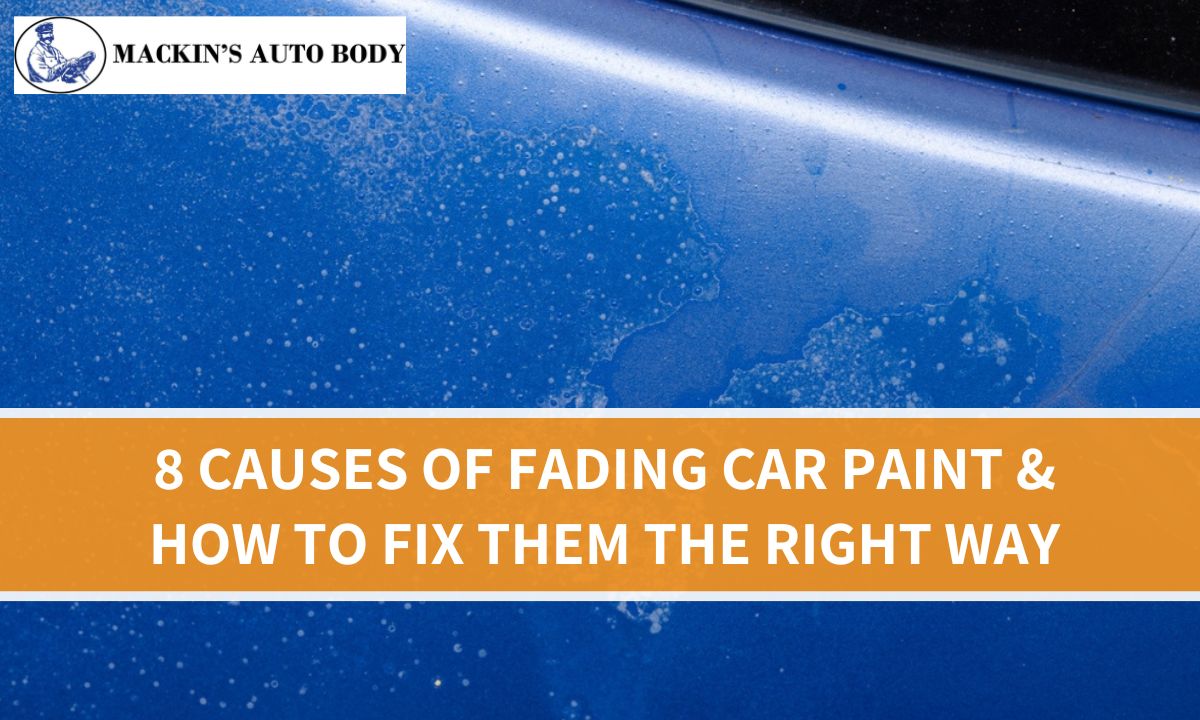
Over time, the paint on your car can begin to fade and lose its shine and vibrance. Whether it’s gradual dulling or patchy discoloration, fading car paint is a common issue, and it can happen even with high-quality paint jobs. If you’re dealing with auto paint fading, don’t panic. You can restore car shine with the right car paint repair approach and keep it protected moving forward.
In this auto paint fading guide, we’ll cover:
- What causes auto paint fading
- Car paint restoration to fix faded car paint (DIY and professional options)
- Car paint fade prevention tips to protect your vehicle long term
Why Causes Car Paint to Fade?
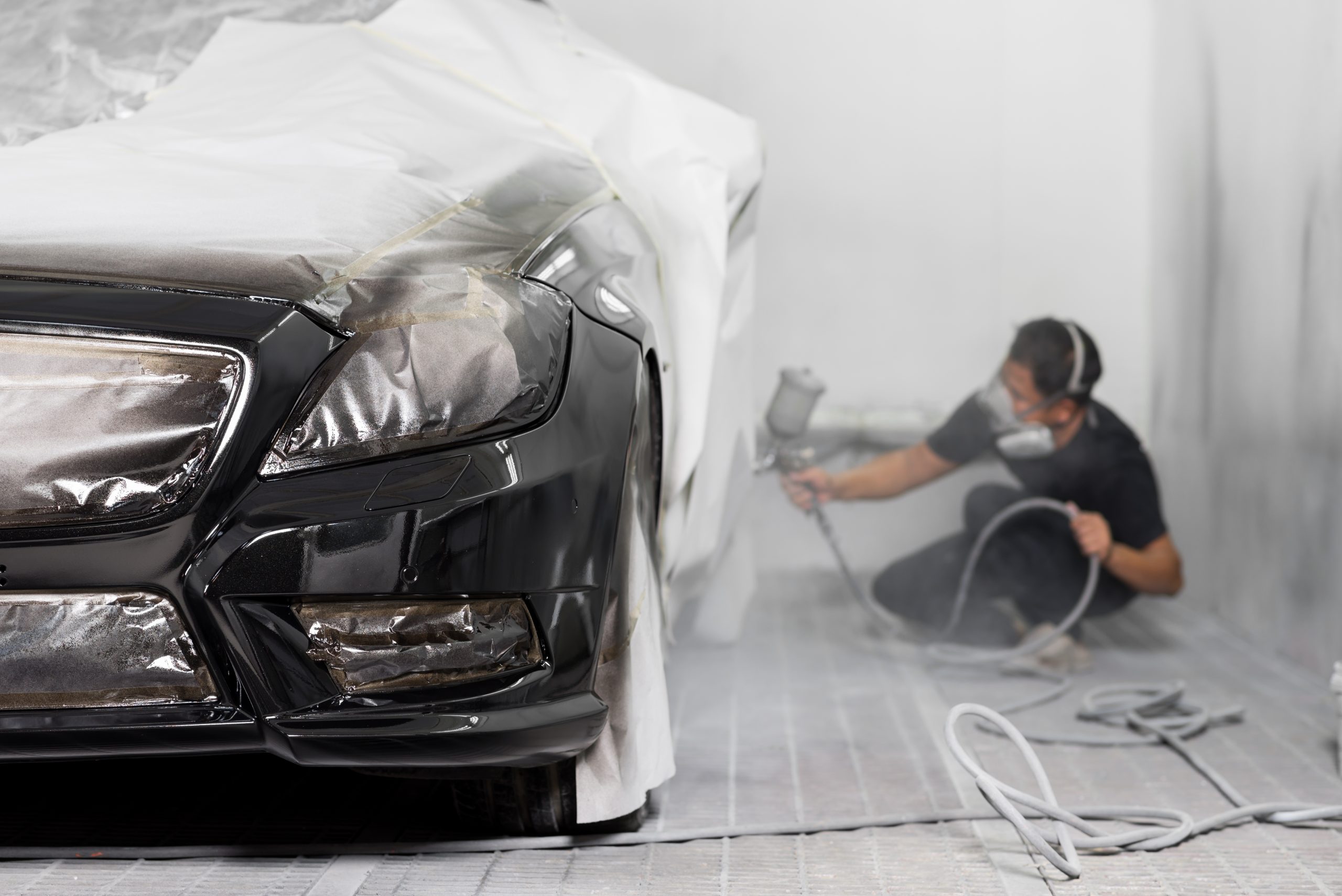
Car paint isn’t invincible and can start to lose its shine and pigment over time. Oxidation on car paint is normal since it’s exposed to harsh environmental elements day in and day out. The paint’s clear coat slowly breaks down, and the pigment underneath fades.
Common causes for auto paint fading include:
1. Sunlight (UV Rays)
Sun damage on car paint is common when cars are exposed to direct sunlight for a long time. UV rays accelerate oxidation on car paint and break down the paint’s chemical bonds, causing paint to discolor and fade.
2. Road Salt
Road salt is great for driving safely in the winter, but it’s not so great for your car’s exterior. Salt is highly corrosive, and when it clings to your paint, it can gradually eat through the clear coat and underlying layers. If not washed off promptly, it contributes to premature paint fading, rust, and other long-term damage.
3. Bird Droppings & Animal Waste
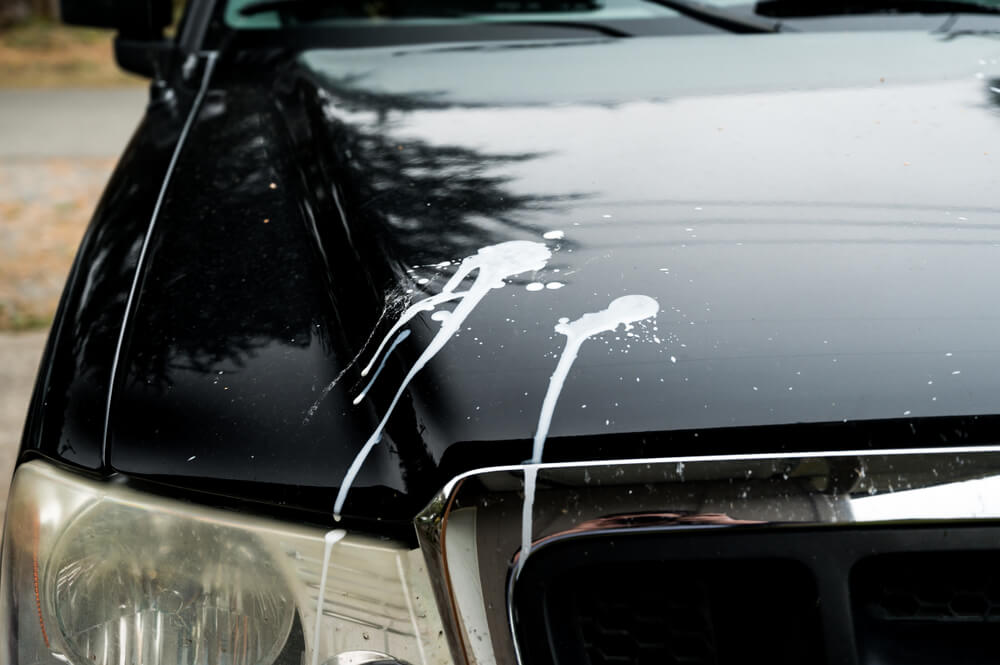
It might seem harmless, but bird droppings and other animal waste are extremely acidic. They can burn into your car’s clear coat in a matter of hours, especially on hot days. They need to be properly washed off immediately and thoroughly; if not, they can cause permanent damage.
4. Acid Rain
Bird poop isn’t the only acidic contaminant that can fall from the sky and lead to fading car paint. Air pollution creates acid rain, which contains sulfuric and nitric acids that erode paint slowly. When acid rain lands on your vehicle and isn’t washed off, it leaves behind residue that breaks down the clear coat and encourages paint oxidation and fading.
5. Low Quality or Older Paints

If your vehicle is older or was painted on a budget, the paint may lack the UV-resistant additives found in today’s more durable formulas. Without that added protection, the clear coat can wear out faster, leaving your vehicle more susceptible to fading car paint and environmental damage.
6. Airborne Pollutants
Dust, debris, and industrial particles (sometimes called “rail dust” or “brake dust”) settle on your car and can scratch the surface or bond to the clear coat. These pollutants often require professional auto detailing to remove fully.
7. Neglected Paint Maintenance
Forgetting to wash, wax, or seal your car once in a while isn’t a big deal. But doing it regularly leaves your car’s paint vulnerable, accelerating oxidation on car paint and breaking down protective layers.
8. Improper Care and Washing
Using the wrong tools or techniques to wash or dry your car can actually do more harm than good. Rough sponges, stiff brushes, dirty rags, or the use of harsh and abrasive chemicals can cause debris to build up and scratch your paint. These scratches increase the risk of oxidation, sun damage, and fading.
How to Know When Your Car Paint Needs Restoration
Not sure if it’s time to take action? These are some clear signs that suggest your vehicle could benefit from car paint restoration or paint correction:
- Paint looks dull or faded, even after washing;
- Uneven color or patchiness, especially on the hood and roof;
- No water beading effect after waxing;
- Visible scratches or primer showing through.
In many cases, a simple buff can do the trick, but sometimes a full paint correction or even repainting may be necessary.
How To Fix Faded Car Paint

If you’ve decided that it’s time to restore paint fade, you have a couple of options. If the fading is minor, you can try to buff the paint to improve its appearance and shine. For major fading, it’s best to take your car in to be professionally restored.
1. Buff Your Car
Buffing your car can help improve the appearance of faded paint and make your car look shiny and vibrant. This is an ideal solution if the paint has only faded mildly. To do this properly, it’s best to follow a 7-step process to make sure you do the job right.
- Wash your car thoroughly: Start by cleaning the entire exterior with a pH-balanced car wash soap and a soft sponge or microfiber mitt. This removes loose dirt and grime that could scratch the surface during buffing. Rinse well and use a clean microfiber towel to dry.
- Apply automotive clay lubricant to faded areas: Spray a generous amount of clay lubricant over the sections of paint that appear dull or oxidized. This step helps the clay bar glide smoothly without scratching the surface.
- Use a clay bar to decontaminate the paint: Rub an automotive clay bar back and forth over the lubricated area using light pressure. The clay will lift embedded contaminants like industrial fallout, tree sap, or road tar, which can dull your paint.
- Attach a wet orbital buffing pad to an electric buffer: Use a dual-action or rotary buffer for even application. Make sure the buffing pad is clean and slightly damp to avoid excessive heat and friction during polishing.
- Apply a buffing compound to the pad: Dab a small amount of buffing compound (also known as polishing compound) directly onto the pad. This abrasive formula helps cut through oxidation and bring back your paint’s shine.
- Polish the faded paint with the compound: Turn on the buffer and slowly move it in overlapping, circular motions across the faded areas – let the machine do the work. Keep the pad flat to avoid swirl marks or uneven polish.
- Wipe off excess compound with a microfiber cloth: Once the section looks glossy and revived, use a clean microfiber towel to remove any leftover polish. Repeat the process as needed.
This process can revive your car’s appearance if it has light oxidation. However, buffing can only go so far, and sometimes you’ll need professional auto painting help.
2. Take Your Vehicle In For a Professional Paint Refresh & Restore
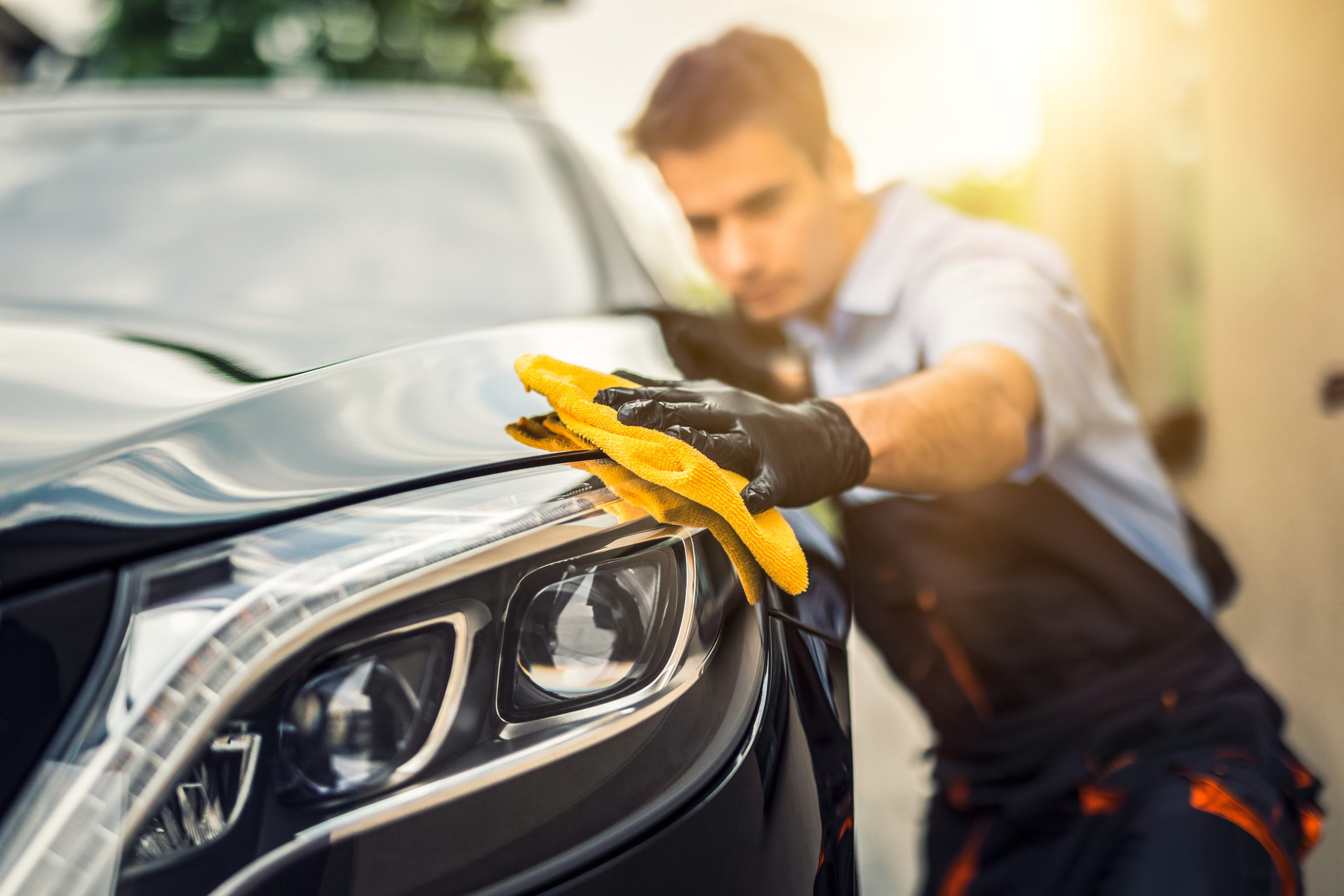
If your car has severe fading, buffing may not make a significant difference. If this is the case, your best bet is to take it into a certified collision auto body shop like Mackin’s Auto Body to get the paint professionally restored. Look for a shop that has a trusted reputation and a proven record in your local community. Mackin’s has been in business for more than 80 years in the Portland, OR and SW Washington area. We’ve built a longstanding reputation for quality repairs and paint restoration, in addition to our commitment to transparency and old-fashioned customer service.
Our technicians at Mackin’s are well-trained and skilled in all aspects of car painting, from color-matching to restoration. We follow a 3-step process: prepare, prime, and paint, using top-of-the-line equipment and technology to restore your car’s shine. To make sure we get the color just right, we utilize computer-assisted color-matching technology to deliver the results you want with consistency and precision.
Debating DIY vs. professional car painting? Check out our 7 reasons to hire a professional to paint your car.
How to Prevent Auto Paint From Fading
Considering that a mid- to high-end paint job can range from $1000 to $20,000, it’s best to avoid auto paint fading before damage sets in.
Here are our car paint fade prevention tips:
- Whenever possible, park in covered areas or use a car cover to block harmful UV rays.
- Immediately clean isolated contaminants like bird poop or tree sap.
- Wash your car regularly with a gentle cleanser to remove salt, grime, and pollutants that can degrade your paint. You can do this yourself or get it done professionally at a car wash.
- Wax your car every 3-6 months to revitalize the appearance and vibrancy of paint.
- Schedule routine auto detailing to maintain your car’s finish.
Not only will these tips help prevent auto paint fading, but regular maintenance also helps protect your car against depreciation.
Should you apply a ceramic coating?
Short answer: yes.
If you want long-term protection and a high-gloss shine, ceramic coating for cars is a worthy investment. Not only does it prevent car paint fading, but it also protects against paint scratches. It won’t wear off in a few months like wax and helps shield your paint from UV rays, oxidation, and road grime.
It doesn’t replace regular washing and maintenance, but it drastically reduces the risk of fading car paint and how often you need auto detailing.
Restore Car Paint Fade with Help from Mackin’s Auto Body
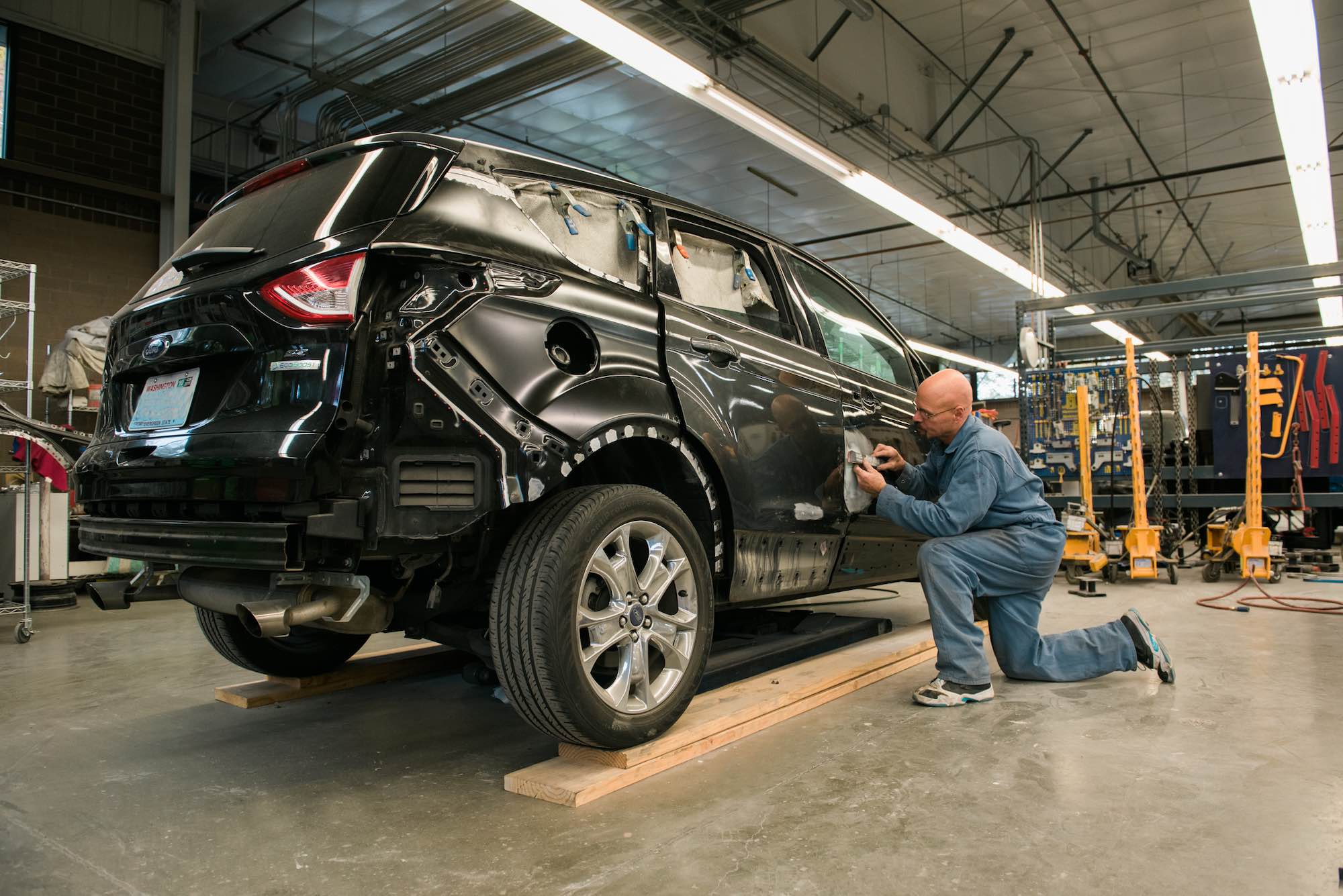
Faded car paint can make your car look older than it really is. The best thing you can do is prevent it from happening in the first place, but we know that’s not always possible. Sometimes, your car’s paint will fade despite your best efforts. In those cases, regardless of what caused it, it’s best to act fast with car paint fade solutions. You can buff out mild fading yourself but for more severe cases, it’s best to trust a professional.
If you’re looking for car paint repair or restoration in the Portland, OR or SW Washington area, trust Mackin’s Auto Body, where we specialize in restoring faded and damaged paint using industry-leading tools and experienced technicians.
We’re certified, local, and family-owned. We’ll deliver superior results and quality customer service in a timely manner. Stop by one of our 12 locations or contact us online or by phone at 1.800.653.0665 to tell us how we can be of service.
Chris Roberts is the Director of Operations at Mackin’s Auto Body, where he has been making an impact since 2018. With a career in collision repair that started in 1999, Chris brings a wealth of experience and dedication to his role. Before stepping into his current position, he served as the Assistant Operations Manager at Mackin’s Auto Body from 2013 to 2017. Chris holds a BA from Northwest Nazarene University. When he’s not ensuring everything runs smoothly at Mackin’s, you can find him skiing down snowy slopes, wake surfing on sunny days, or cheering on his daughter at her soccer games.

